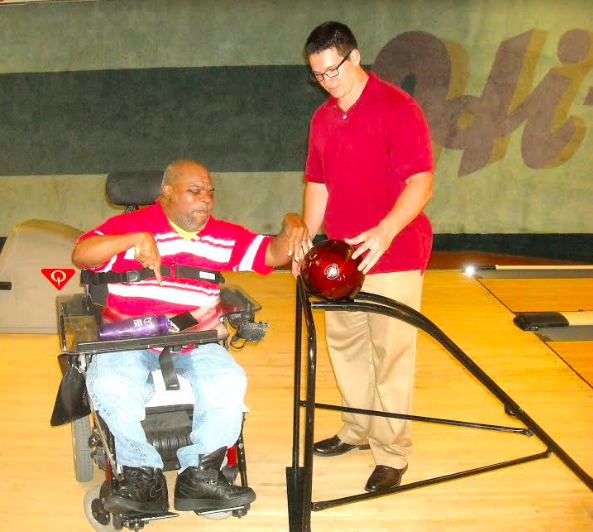
By Barry Warner
From cycling and golf to bowling, the Helen Hayes Hospital (HHH) Adapted Sports and Recreation Program is a four-season initiative serving individuals with a range of abilities, interests and skills. Leisure opportunities are an important component of an active lifestyle fostering rehabilitation, recovery and camaraderie.
First adapted after WWII, injured veterans returning home enjoyed bowling with the help of assistive technology. Today the game is accessible with minimal adaptations, to individuals of all skills and abilities. An estimated 56.7 million people in the United States, or 20 percent of the population, have a disability. Staying active while living with a disability can help strengthen the heart, build strong muscles and bones, plus improve coordination.
“Bowling doesn’t need too much modification,” Peter Gagliardo, coordinator of the HHH Adapted Sports & Recreation Program told the Rockland County Times. “We have between 5 and 15 bowlers at any time. By bowling from the side of the wheelchair, the participant can hold the ball and then roll it down the lane. If the person doesn’t have the capability of doing that, a ramp system can be used and we can get a volunteer to load the ball on the ramp. The direction of the ramp can be controlled by the bowler. Nobody in the program wanted to use bumpers. They love coming out to bowl and get strikes! Adapted Sports in general is a way to do what they enjoy.”
“Scott Peretin has volunteered to help us with the ramp system, because the bowlers can’t carry the ball,” Gagliardo continued. “He is their able-bodied counterpart to bring the balls from the ball-return to their ramps and then position the ramps to their satisfaction.”
The ramp is used for bowlers in wheelchairs, as well as those individuals who have low muscle tone or limited range of motion in their arms. The ramp is lightweight and easy to move, so bowlers will have no problems moving the ramp to line it up for a strike. The wide rear legs allow wheelchair-using students to get right up to the ramp with no obstacles. No-slide rubber feet on the legs keep the ramp in place during use.
“I like bowling. It gets your competitive juices flowing, it’s nice to be out and about and it’s good recreation,” said wheelchair user Greg. “I have been bowling for 50 years and have been doing disabled bowling for two years. I enjoy it very much!”
The bowling ball pushers are simple devices that can be operated from standing or seated positions. They have long extended aluminum arms and a grip at the end that conforms to the shape of the ball and allows the user to easily and accurately push the ball in a certain direction. There are several versions of ball pushers. The main variation between the pushers is the grip that contacts the ball. The user simply uses the device to push it down the lane, either in front or to the side of the wheelchair.
Adaptations have been made for people who may have a hard time lifting heavier balls. The rubber bowling ball provides children and adults with special needs a lightweight ball that’s easier to hold. It allows for a creative routine where both hands and feet may be used.
There’s a special wheelchair designed for bowling. The wheels are wide and set under the chair so that they don’t interfere with the bowling action. There’s also a wide footplate in front of the wheelchair, which the user can rock into when they follow through with their bowling swing. This type of adaptive device is designed for people with near normal upper extremity function who use wheelchairs.
“Bowling allows people with disabilities to use equipment to play the game as close to normal rules,” volunteer Scott Peretin said. “The equipment changes from person to person based on the type of disability they have. They use ramps to propel the balls down the lanes. I help position the ramps and load the bowling balls on the chutes and that’s the biggest aid that people might need. Bowlers position their wheelchairs sideways to the pins, so they can move their arms a bit easier. A lot of equipment is custom made depending on their needs. I’m studying Recreational Therapy at Western Carolina University. I’m a student at the hospital, and I thoroughly enjoy my time with adaptive sports and love the people involved in it. We use the modalities of strength, endurance and fine motor skills to accomplish our goals.”
For additional information contact Peter Gagliardo, coordinator of the Helen Hayes Hospital Adapted Sports Program at 845-786-4950.

You must be logged in to post a comment Login